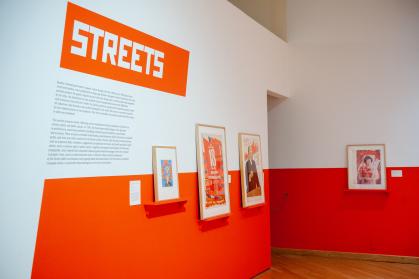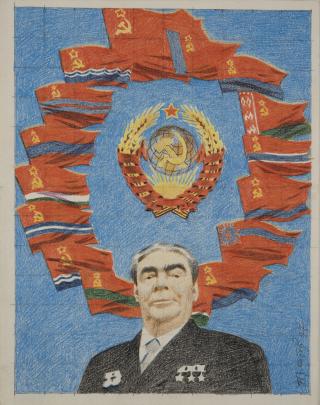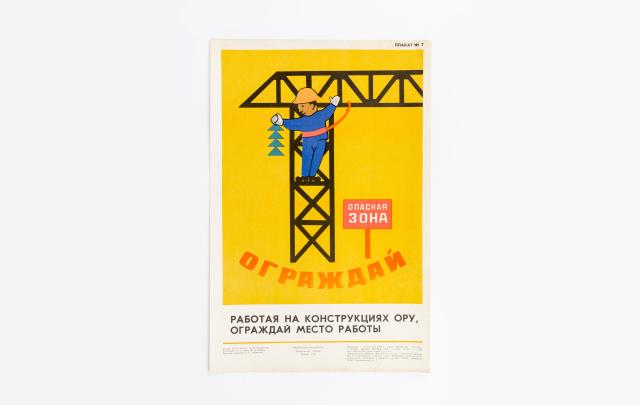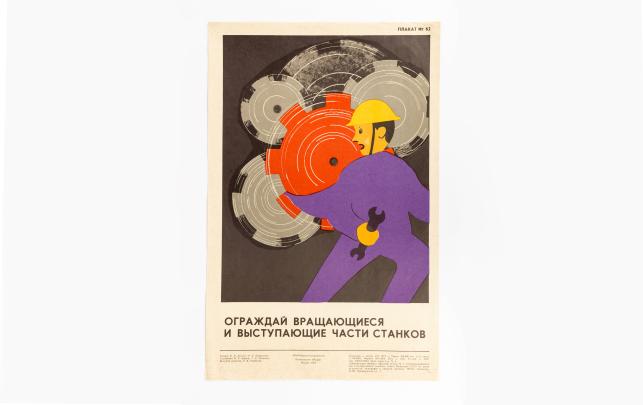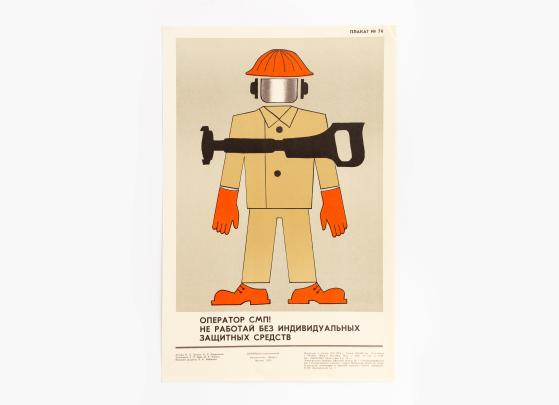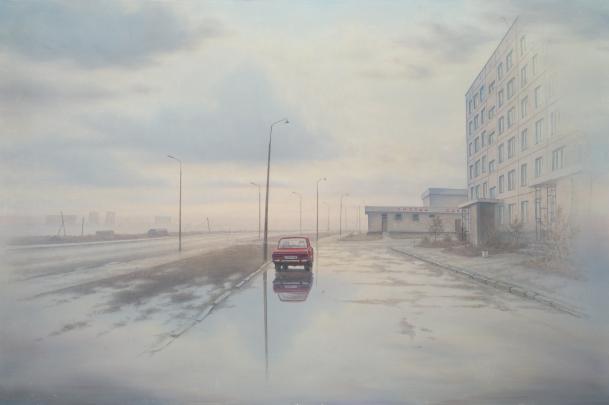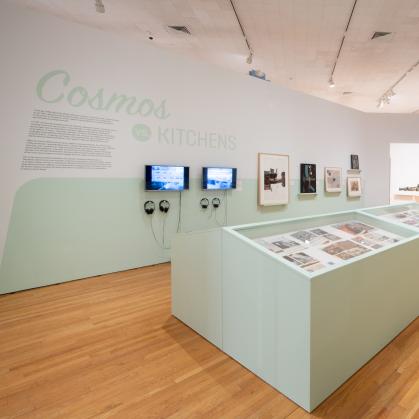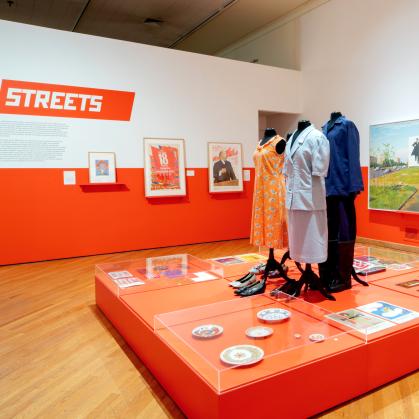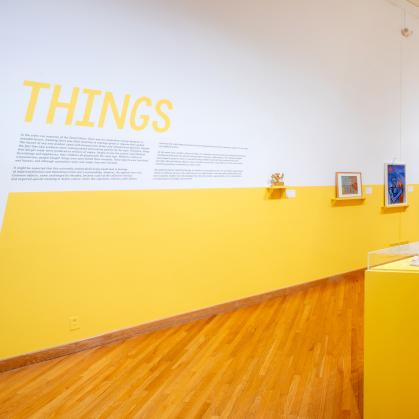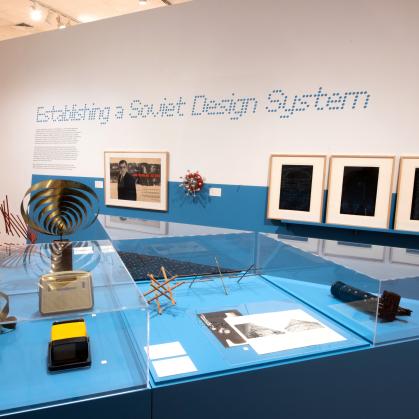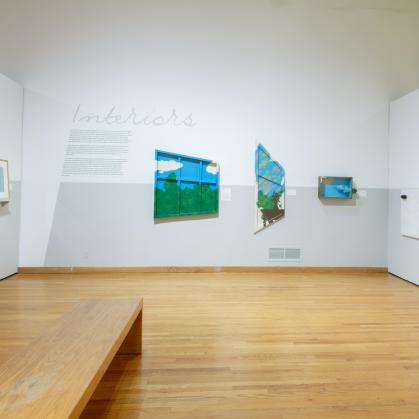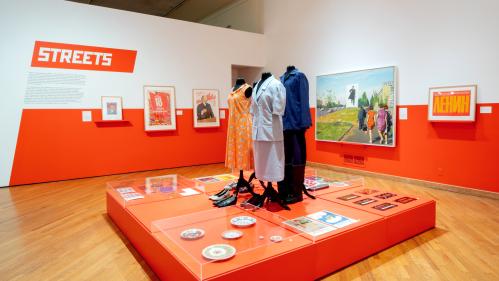
Streets
Despite renewed government support, Soviet design from the 1950s to the 1980s faced many structural hurdles, most significantly a large gap between designers and the industries that could actually produce the goods. Despite the fact that new designs were commissioned and supported by the state, the fabrication of new products faced considerable bureaucratic difficulties and resistance from factories. Under the Soviet system of a government-planned economy, where all industries (and therefore any profits) belonged to the state, there was no economic incentive for the implementation of new products. This led to shortages of consumer goods and little variety in what was produced.
This section presents works reflecting on the manufactured visual components of Soviet city streets, parks, and public spaces. In 1954, the Soviet government began a new approach to architecture, promoting methods of building characterized by simplicity, functionality, and economy. These projects extended inside homes, generating new kinds of furniture, household goods, and even new daily routines for the Soviet citizen. Posters with lifestyle recommendations, such as proposed daily schedules, suggestions for physical exercises, and health and public safety advice, were a common sight in public spaces, together with posters and slogans of Communist propaganda. Such cheerful but somewhat imposing governmental messages were ever-present in people’s lives, much as advertisements were in America. Many of these components of the Soviet public environment were appropriated and commented on in the works of unofficial, renegade artists, in particular those belonging to the sots art movement.
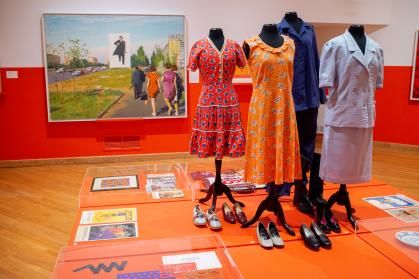
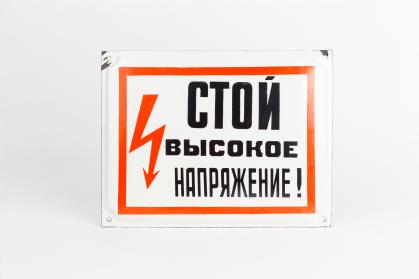
Metal, 1970s-1980s
Moscow Design Museum, Moscow
Informational plaques and signs in the U.S.S.R. were part of everyday material culture. “No trespassing,” “keep out,” “conserve heat—close the door,” and “draining oil products into the sewer is prohibited”—such public signs were common in the Soviet Union. They covered a variety of topics and were found in public spaces such as schools, offices, libraries, and hospitals. As a rule, they were made of metal with stenciled letters. Due to their ubiquity, they became the subject of jokes, paintings, posters, and even movies and theatrical productions.
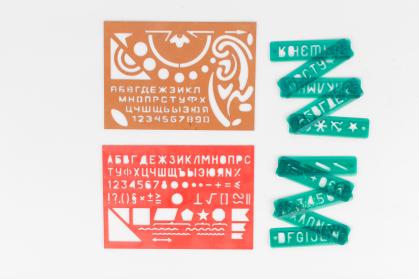
Plastic, 1980s
Moscow Design Museum, Moscow
In the 1980s, stencils made of thin transparent or colored plastic appeared for the first time in the U.S.S.R. They were used for making signs and inscriptions by filling in the stencil letters with water-soluble paints such as gouache and tempera. Stencils were very cheap to purchase and considered disposable. Readily available at almost every stationary store, stencils were sold in different formats and fonts. Brief instructions for using the stencil were included on the back of the package. They were popular because school children and ordinary Soviet citizens could use them to independently create signs and announcements using available materials. In the Soviet Union, the proliferation of informational signs was aided by the availability and popularity of stencils.
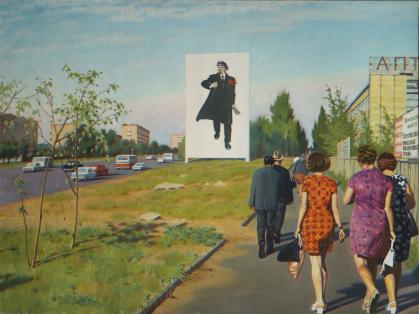
Krasikov Street
Oil on canvas, 1977
Zimmerli Art Museum, Norton and Nancy Dodge Collection of Nonconformist Art from the Soviet Union
© 2021 Artists Rights Society (ARS), New York / ADAGP, Paris
During the 1970s, Erik Bulatov developed his style by adapting the visual language of Soviet posters. These posters not only propagandized a bright Soviet future, but also educated citizens about proper behavior and cautioned them against common dangers in household and public environments. Posters with images of Vladimir Lenin and warnings such as “Say NO to alcohol,” “Do not play with matches,” and “Walking along railroad tracks is dangerous” were everyday features of the Soviet public environment. The artist boldly recast the elements of the government-issued public messages in a way that allowed the viewer to see through the propaganda into the realities of Soviet life.
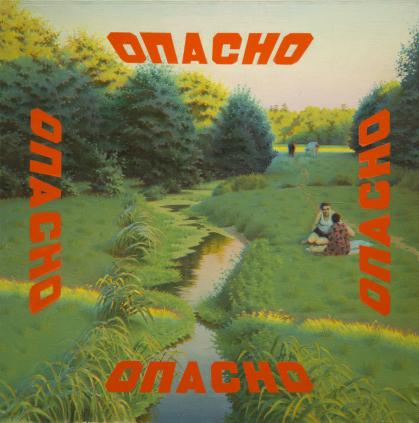
Danger
Oil on canvas, 1972-1973
Zimmerli Art Museu, Norton and Nancy Dodge Collection of Nonconformist Art from the Soviet Union
© 2021 Artists Rights Society (ARS), New York / ADAGP, Paris
In Danger, the artist presents a peaceful landscape typical of the Soviet countryside. The manner of painting imitates the qualities of poster printing, to which the artist has added lettering taken from the ubiquitous design of public transportation signs: specifically, the warning “do not lean on the subway doors.” The Russian word for danger creates a perspectival funnel that sucks the viewer into the landscape. The superimposed letters add a new layer of meaning to the peaceful landscape, ironically alluding to the atmosphere of Soviet life and the constant sense of tension and personal danger that saturated the consciousness of each Soviet person.
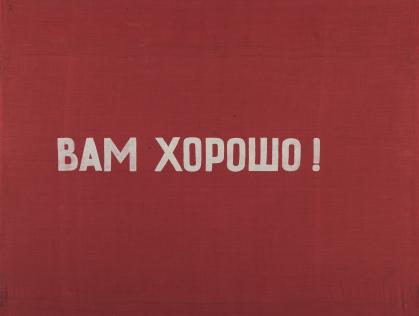
You Are Well!, from the series Sots Art
Tempera on cotton fabric mounted on cardboard, 1972
Zimmerli Art Museum, Norton and Nancy Dodge Collection of Nonconformist Art from the Soviet Union
Vitaly Komar and Alexander Melamid began collaborating while they were art students in Moscow and later emigrated together to New York. They coined the term “Sots Art” (Socialist Art) in the 1970s to refer to art that ironically commented on Soviet life by combining elements of Pop Art and Soviet propaganda. The proclamation “You Are Well!” is a humorous spin on the affirming signs and slogans that were ubiquitous in the visual culture of Soviet public spaces. As a parody of official messaging, Komar and Melamid’s motto is styled in the language of Soviet ideology to comment on the prescriptive banality of state mandates.
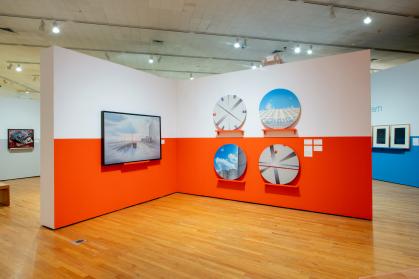
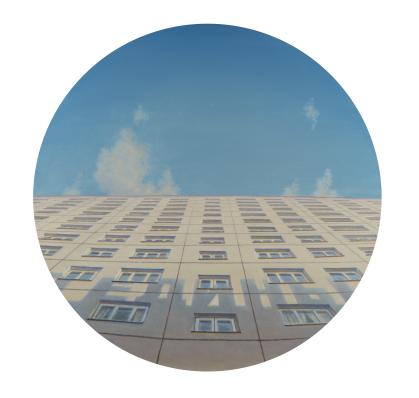
Shadow, from the series Home
Oil on canvas, 1988
Zimmerli Art Museum, Norton and Nancy Dodge Collection of Nonconformist Art from the Soviet Union
Sergei Shablavin’s composition depicts the geometric exteriors of mass-produced apartment buildings underneath a blue sky with fluffy clouds. The artist explores themes of alienation by highlighting the dichotomy between the organic shapes of the natural landscape and the constructed panel forms of housing architecture. With the introduction of identical housing blocks fabricated using the same materials and methods, cities and suburbs across the Soviet Union began to look very much alike after the 1960s. In Soviet culture, the homogeneity of prefabricated housing was associated with the comforts of modern living but also lifestyle conformity and rigid social organization.
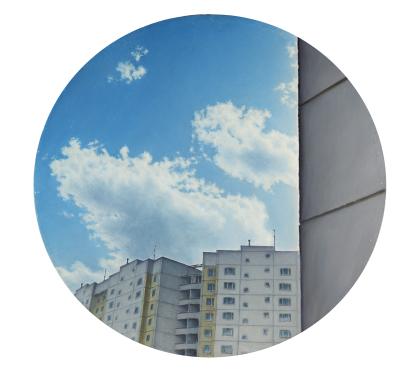
Sky Over City
Oil on canvas, 1978
Zimmerli Art Museum, Norton and Nancy Dodge Collection of Nonconformist Art from the Soviet Union
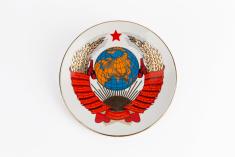
Designed and manufactured by the State Porcelain Factory in Leningrad (now St. Petersburg, Russia)
Porcelain, 1960s-1980s
Moscow Design Museum, Moscow
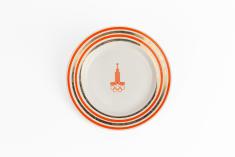
In the Soviet Union, production of propaganda ceramics and porcelain began in 1918 at the State Porcelain Factory (which is also known as the Imperial Porcelain Factory and the Lomonosov Porcelain Factory). The factory developed a new visual language to represent the nation through symbols: sickle and a hammer, red stars, an ax and ice pick, and saws and springs.
In the 1920s, new ceramic designs were created by Soviet artists, which were then replicated for many decades. Common themes included comparing the “old” and “new” ways of life, revolutionary holidays and important historical dates, events of the revolution, and glorifying various forms of rural and industrial labor. Ceramic souvenirs for the Olympic Games or "50 Years of October" were also mass produced. Such objects could often be found in Soviet homes and were considered valuable interior decor.
